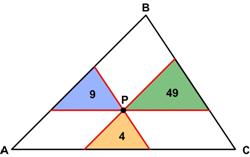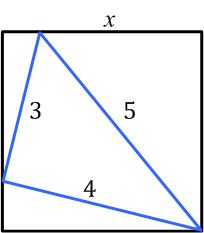 Here is another problem from Presh Talwalkar which he says is adapted from India’s Civil Services Exam.
Here is another problem from Presh Talwalkar which he says is adapted from India’s Civil Services Exam.
“There are three runners X, Y, and Z. Each runs with a different uniform speed in a 1000 meters race. If X gives Y a start of 50 meters, they will finish the race at the same time. If X gives Z a start of 69 meters, they will finish the race at the same time. Suppose Y and Z are in a [1000 meter] race. How much of a start should Y give to Z so they would finish the race at the same time?”
Even though Talwalkar’s original graphic showed all the runners in a 1000 meter race, it was not immediately clear to me from the wording that the race between Y and Z was also 1000 meters. But that was the case, so I made it explicit.
See the Three Runners Puzzle for solutions.

 Here is yet another problem from
Here is yet another problem from  Yet another interesting problem from
Yet another interesting problem from  This is another challenging puzzle from
This is another challenging puzzle from  This is another problem from the indefatigable Presh Talwalkar.
This is another problem from the indefatigable Presh Talwalkar. Here is another engaging problem from
Here is another engaging problem from  This is a delightful and surprising problem from
This is a delightful and surprising problem from  Presh Talwalkar had another interesting
Presh Talwalkar had another interesting  This is another intriguing problem from Presh Talwalkar.
This is another intriguing problem from Presh Talwalkar. Another challenging problem from
Another challenging problem from